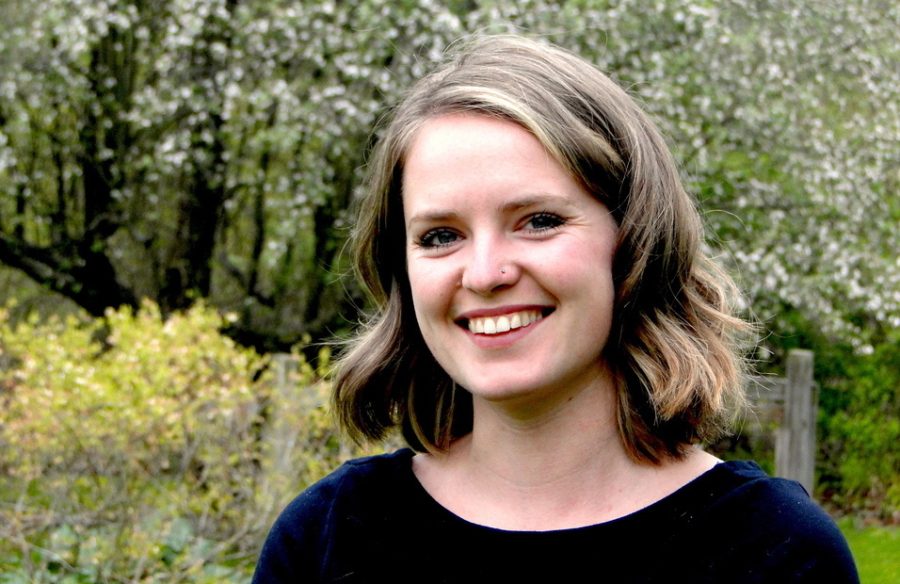NASC Colloquium: Climate Stories Through Art
On Friday, March 4, a group of students, community members and staff gathered in the Ho Science Center to hear artist and scientist Jill Pelto speak on her career as a climate change artist who works in science communication and art. Pelto was brought to Colgate as a part of the NASC Colloquium, and the event was co-sponsored by Core Scientific Perspectives. Pelto’s practice of painting over her scientific data to visually evoke the relationship between climate change and its physical effects was inspired by her bachelor’s degrees in studio art and earth and climate sciences. Her master’s degree concentrated on studying the changes of the Antarctic ice sheet in a warming world, but she never lost her connection to art. In creating these works, Pelto aims to convey the emotions she feels about the various climate change studies she’s involved with. She has had her artwork exhibited across the United States; her pieces have been recognized in the Smithsonian, Time Magazine and National Geographic. Additionally, Pelto’s creative process has been the inspiration for exercises used in K-12 curriculum programs across the U.S.
Pelto explained her inspiration for the process:
“I think it’s important to remember that different types of media can really communicate complexities in such distinct ways; that’s why I think it’s important to connect with science research because if people don’t see the data, it doesn’t have the impact that it’s meant to have. That’s where many scientists are looking for connections, and what I’m trying to bring to the table with my art.”
Pelto’s art, primarily displaying changing landscapes or natural physical features, utilizes data from her own fieldwork as well as that from scientists around the world. She offered the audience some insight into her creative process, providing the example of a graph she worked on representing her fieldwork on a glacier in Washington and its loss of mass over time due to climate change. Under the graph line, she painted an abstracted view of the glacier, showing the deterioration of the beauty of the glacier. For the July 2020 issue of Time Magazine, Pelto created the cover, entitled “One Last Chance.” The cover showed global data on CO2 emissions, average global temperatures, renewable energy consumption, land ice volume and sea-level rise. Painted within the data lines is a vibrant, detailed, but changing landscape.
For first-year Ben Schweighauser, the lecture helped him see the climate change crisis in a new way.
“I enjoyed participating in the discussion about the connection between climate change data and art. It made me care more about our environment and helped me see a bigger picture of what we, as a world, have lived through and what we are living through now.”
Pelto’s artwork is primarily done in watercolor paints, and detailing is done using colored pencils and acrylic paint. Pelto shares her work through workshops, talks, classroom visits and professional presentations. Additionally, she has expanded outreach to share her work in both physical and virtual spaces, and to expand her data art activities for children to be accessible online.
Community member Regina Silvestri commented after the lecture:
“As members of the greater community, we are glad to be welcomed into Colgate’s many fascinating lectures. It was so interesting learning about Maine artist Jill Pelto’s perspectives on employing graphs as the basis of her artwork.”
To find out more about the NASC Colloquium, upcoming events can be found on the Colgate University event calendar.







